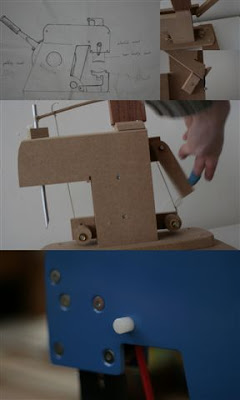Collection: Redefine Our Public Space
a: Fountain
b: Fireside
c: Lamp
d: Swing
Design vision
For my graduation I designed a collection of products that reshapes and redefines our public space. By using well known products I want to show what is possible with what already exists. Simply attaching a bell to a lamppost transforms it into a landmark. More or less the same idea inspired my design for a fireplace insert, attachable to Holland’s most wide spread public trashcan. Thanks to this design dull and derelict places become hangouts of choice and to the same object I designed an attachment that makes a fire post into a fountain. It’s my strong belief that in a time of economic hardship and individual isolation we should address ourselves to public space as a collectively owned domain and possible ways to use it to our joint benefit.
Born: 1990 Amsterdam NL
Thor was an intern at Floris Schoonderbeek
Contact and information:
Research and Inspiration
The term public space somehow suggests that urban environments are open to our free use. The reality is that public space is over regulated. There is little room for free use, no room for play. A serious obstacle is zoning or urban planning with the attached discussions on what is permissible where and the ambition to regulate on this for the long run. To make public space free and a life again I propose temporary intervention making short term use of the plastic possibilities of specific places.
I do not think or work in terms of finished products that would add a nice look. What triggers me is a specific site that somehow asks for an idea, a plan to make use of its features. A place can invite you to play with the idea to install a swing just to have a look at the adjacent river. Likewise a rather boring street can invite you to think of possible way to do something about it.
My first steps in working out idea’s is sketching and making a mood board. In my mood boards I bring together imagery concerning the intervention I’m planning and the object or product that plays a key role in this intervention. The next step is making a prototype. Once I have this prototype I start refining it in terms of aesthetics and functionality.
























































